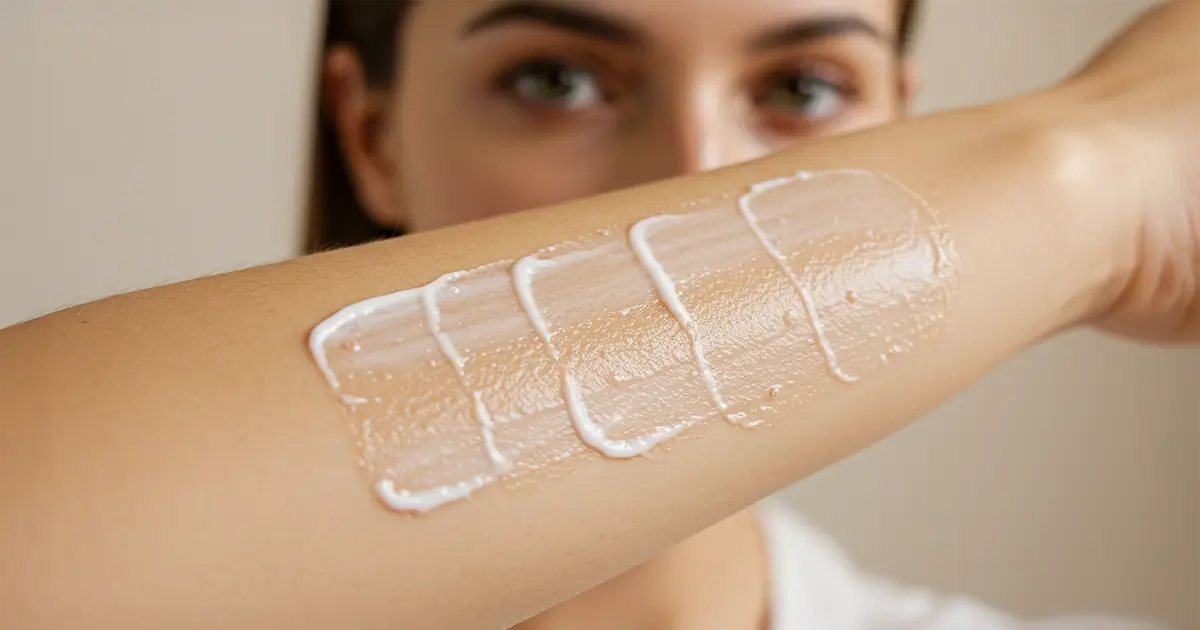Ever smoothed on a lovely serum only to watch it pill under your cream? You are about to learn how simple order, texture, and timing can turn a chaotic routine into a silky symphony, all in one cheerful 10-minute read.
Why Order Matters More Than Most People Realise
I like to imagine each product as a guest at a tiny spa party on my face, and every guest needs a seat that fits their outfit. Water-light formulas slide in first, forming a friendly base that lets heavier textures settle without a turf war. Dermatologists at the American Academy of Dermatology note that correct sequencing helps actives reach their intended depth rather than loitering on the surface where they oxidise and underperform.
Our skin is not a passive canvas, it is a dynamic barrier with micro-channels that open and close as humidity, temperature, and pH shift. When products are layered out of order, larger emulsions can block those channels so smaller molecules never get through. Think of trying to push a bicycle through a door after bringing in a sofa: someone ends up stuck in the hall.
Finally, correct order keeps preservatives from clashing. Many serums rely on low-pH systems, while thick occlusive creams hover near neutral. Placing them properly avoids neutralising either formula, cutting down the risk of irritation and wasted cash.
The Classic Thin-to-Thick Rule, Demystified
Thin-to-thick sounds obvious until you hold a slippery essence in one hand and a watery ampoule in the other. The trick is density, not packaging. Shake the bottle, watch the drip. If it runs like water, apply first. If it glides like yogurt, park it later. My grandmother layered this way decades before influencers came along, and her sensible system still works.
Texture Translation Checklist:
- Waters and toners
- Essences and light serums
- Ampoules and gel creams
- Lotions and emulsions
- Rich creams and butters
- Balms and sleeping masks
Some brands blur lines by stuffing oils into watery bases. In that case, check the ingredient list. If an oil or silicone ranks in the top five, treat the product as medium weight even when it feels deceptively light.
Ingredient Priorities and Potential Conflicts
pH-Sensitive Friends
Vitamin C and exfoliating acids need a low-pH environment. They belong immediately after cleansing, before buffers like peptides sneak in. A 2023 study from the Journal of Cosmetic Dermatology showed vitamin C uptake doubled when applied before, not after, neutral moisturisers read the data.
Occlusives and Oils
Occlusives seal everything under a breathable film. If applied too soon, they barricade the path for water-based actives. I treat facial oils as a finishing touch unless the formula is a specialised treatment oil that specifies otherwise on its label.
SPF Is Not Negotiable
Sunscreen goes last in the morning, full stop. It forms a uniform film that needs minimal disturbance. If you crave glow, mix illuminating drops into your sunscreen dose rather than layering a dewy cream on top; Mayo Clinic dermatologists confirm any extra layer above SPF cuts protection by up to 25 percent.
Timing and Absorption Windows
Your routine is not a sprint, yet nobody has an hour to wait between steps. Most water-based serums absorb within one minute if skin is slightly damp. Press, do not rub, then move on when the surface feels just shy of dry. Waiting until skin is bone dry can make acids sting, so a smidgen of moisture is your friend.
For night routines, I follow the "commercial break" method. Apply a layer, queue the kettle, return when the tea is ready. Two minutes works for almost every texture apart from retinoids, which prefer a completely dry canvas to reduce irritation.
Day routines are shorter. If I can tap my cheek without residue sticking to my fingertip, the next layer is welcome. This tiny test beats any timer app and spares me from looking as though I rolled in eraser shavings.
Customising the Rule for Different Skin Types
Dry or mature skin enjoys an extra mist between layers. The mist sandwiches in hydration and keeps actives mobile long enough to penetrate. Oily skin, on the other hand, can skip redundant hydrators and move straight from toner to treatment, trimming heaviness without sacrificing results.
Sensitised complexions should employ the "buffer zone", meaning a bland moisturiser before potentially harsh actives. This cushion slows penetration, granting skin time to adjust. I like to use a ceramide-rich cream from my earlier post on rebuilding the barrier; you can find that routine guide here.
Combination skin benefits from spot-layering. Apply rich balm only on cheeks, keep a gel lotion for the T-zone, and unify everything with a single sunscreen. No one said every square centimetre must wear the same wardrobe.
Troubleshooting Common Layering Mishaps
First up, pilling. Those grey rolls happen when incompatible polymers settle on top of each other. Reduce silicone overlap and use lighter strokes. Imagine patting a sleepy cat rather than sanding a floor, and the formula will stay put.
Next, unexpected sting. If a gentle serum suddenly burns, check what came before it. Leftover acid or alcohol from toner can lower the pH of the following product. A rinse or a neutral barrier mist often fixes the issue.
Finally, disappearing actives. High-water sunscreens can dilute thin serums if layered too soon. Let the serum set, then apply sunscreen in a generous, single pass. Think icing a cake in one sweep instead of painting a fence with overlapping strokes. One joke for relief: if only my ex absorbed emotional cues as quickly as my hyaluronic acid absorbs water, breakups would be shorter.
FAQ
Is toner really necessary before serums?
Not compulsory, but a watery toner can restore pH after cleansing and provide slip so serums spread evenly without tugging.
Can I mix vitamin C with niacinamide in the same routine?
Yes, modern formulas are stabilised. Apply vitamin C first, let it settle two minutes, then follow with niacinamide to avoid temporary flushing.
How long should I wait before applying sunscreen?
When the last skincare step feels dry to a gentle tap, usually two minutes, proceed with your full sunscreen dose.
Do facial oils replace moisturiser?
No, oils lack water. Use them after or mixed with a hydrating cream so skin receives both moisture and occlusion.
What causes products to pill?
Too many silicones or thickeners layered quickly, plus vigorous rubbing. Pat products in, and choose complementary textures.
Is it safe to layer multiple exfoliants?
Only under professional guidance. Overlapping acids and enzymes can strip the barrier and invite inflammation.
Conclusion
Layering is part art, part skin science. Start with the thinnest texture, honour special-case ingredients, and give each step a brief moment to breathe.
Now it is your turn to audit the order on your shelf. See you in the next post - until then, take good care of your skin!
Master thin-to-thick product layering: discover textures, timing, and ingredient rules that boost efficacy and avoid pilling or irritation.


Comments (0)
No comments yet - be the first to share your thoughts!
Leave a Reply
Your email address will not be published. Required fields are marked *